I had hoped to identify the dignified woman who sat for this portrait at the Bombay Photographic Company in the late 1890s or early 1900s, but so far I haven’t had any luck. The photographer, S. Hormusji, is also a bit of a mystery, at least as far as online sources go. His first name may have been Shapoorji (see updates at the end of the post). Some examples of his work were included in an exhibit in Mumbai in 2010, organized by the Alkazi Foundation for the Arts in New Delhi, titled The Artful Pose: Early Studio Photography in Mumbai (c. 1855-1940). An illustrated catalog of the show was produced, but only an excerpt is available online. Other online sources refer to Hormusji simply as a Parsi photographer.
The back of the cabinet card has handwritten notations in the upper right which were probably made by Hormusji or an assistant, including “6×8 oval medallion,” “6×8 oblong” and “sepia colour plain in both“:
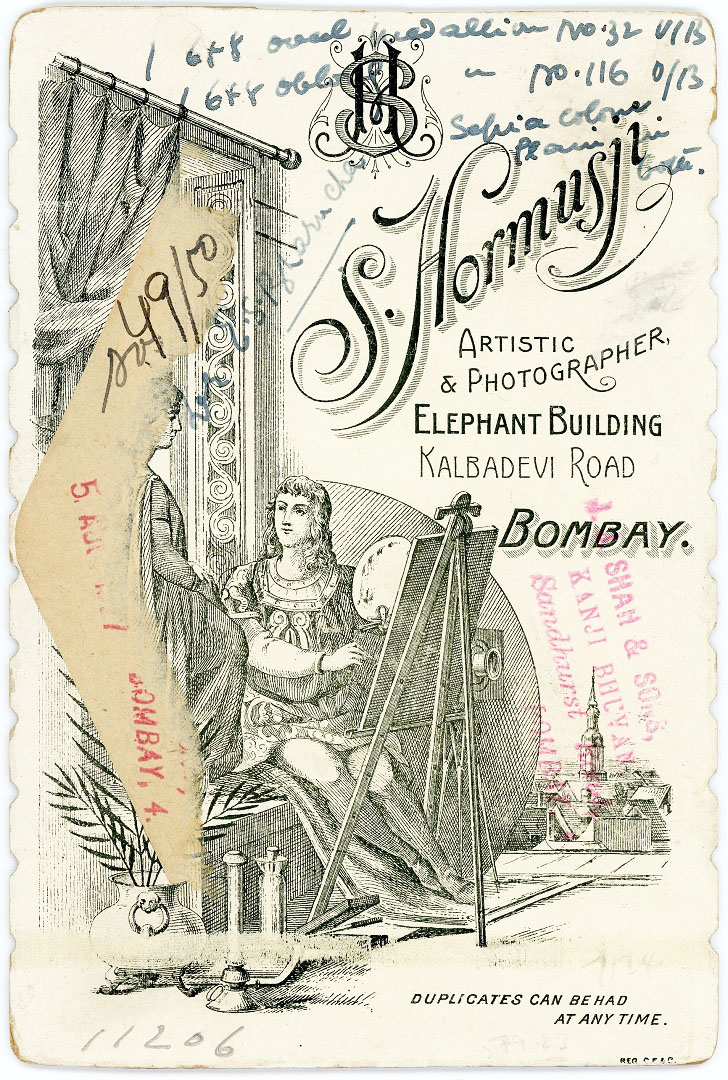
Just below those notations is a name, written by hand in the same ink but more faded, which looks like it might be Dr. E.S. Bharucha. See what you think:

(You can see a larger scan of the back of the photo in a separate tab here.)
We can’t know if the name refers to the sitter, a family member such as her husband, or someone completely unrelated to her. The photo came to me from a dealer in Kettering, England. If the sitter was a doctor, she might well have visited the United Kingdom for professional reasons. If her husband was a doctor, she might have traveled with him. Of course, the photo could have made its way to England more recently. I’d love to know who she was.

Updates, October 2021:
- S. Hormusji’s first name may have been Shapoorji. I’ve acquired a carte-de-visite which appears to have been made in Bombay by “Shapoorjee Hormusjee,” although the name is partially obscured by old album paper.
- Could Dr. E.S. Bharucha have been Khan Bahadur Erachji Sheriarji Bharucha, Assistant Surgeon?

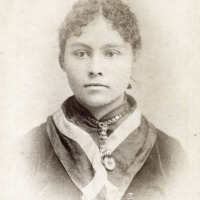
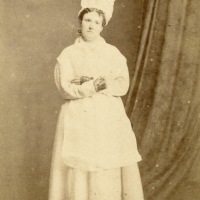
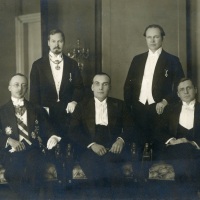
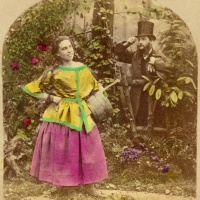
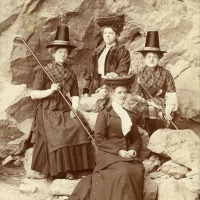
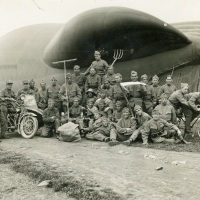
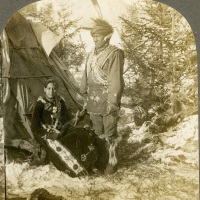
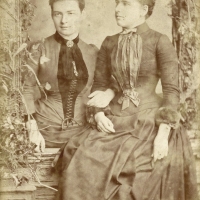
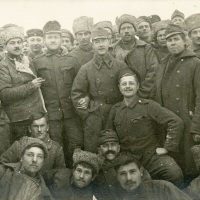
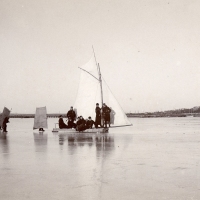
I feel like a veritable Sherlock Holmes! Before I read your text carefully, I really examined the photo and thought, “That woman looks like she’s Parsi.” Her facial features caught me first; then it occurred to me that she was wearing her sari in a way associated with Parsi women. There’s a post here that shows some women with similar features. It also has some information about their saris. Beyond the drape, the sari of the woman in your photo has the ribbon-like trim associated with Parsi styles. Given the location — Mumbai/Bombay — and the fact that the photographer was Parsi, I’d bet anything this is a Parsi woman: upper class, well-educated, and probably professional.
LikeLiked by 5 people
I just checked out the link you shared. I think your assessment of the sitter’s background.
LikeLiked by 1 person
As did I and agree. Seems quite distinct from traditional Indian garb.
LikeLiked by 1 person
Good for you, Linda! I’m genuinely impressed! The ribbon-like trim of the woman’s sari is so pretty, with those delicate little flowers. You’d never call her sari flashy, yet our eyes are drawn to those bright spots on the dark fabric. They could be white or a light shade of another color. It’s hard to tell.
When I first saw this photo, I thought, “She looks like a teacher.”
LikeLike
Another fascinating mystery! The script does look like ‘Dr’ to me.
LikeLiked by 1 person
Thank you! I don’t always trust my own eyes when trying to read cursive script from previous centuries. 😄
LikeLiked by 1 person
Perhaps you could contact the people who organized the photo exhibition and see if they can shed any light on who the sitter might be. Interesting post!
LikeLiked by 1 person
Good suggestion! Maybe the Alkazi Foundation could put me in touch with a historian of the Parsi community.
LikeLike
I agree that it says Dr. Tantalizing image.
LikeLiked by 1 person
Thanks, Eilene! I have a feeling this woman was a prominent member of her community, which will make it possible to identify her eventually.
LikeLiked by 1 person
My first instinct is that she was a doctor! Something about her demeanor 🙂
LikeLiked by 1 person
In my first draft of this post, I had a paragraph about her demeanor and how it communicated professionalism. I took it out because I was curious whether others would respond to the photo in the same way. And you did! 🙂 I think she was accustomed to being in the public eye, either as a doctor or a teacher or in some other capacity.
LikeLiked by 1 person
How interesting! Both the photographer (or the studio owner) and the photographed belong to Parsi community. This post tempts one to be an investigator! Thanks for the information that Hormusji was one of the pioneers in studio photography in Bombay.
I could read 1 6×8 Oval and 1 6×8 Oblong & Sepia colour plain in both.
While searching, chanced upon some photographs from Hormusji’s and a couple of ladies have resemblance to the one in this photo!!
LikeLiked by 1 person
Hi Rethy! I also saw the word “oblong,” but wasn’t sure. Now I am! As far as “in both,” why couldn’t I see that? It seems obvious now, but my brain couldn’t see it before. I’ll add those to the post. Thank you for your nice comments and help!!
LikeLiked by 1 person
I love how everyone is so involved in this mystery!
LikeLiked by 1 person
Hey Tracey! I thought of you recently and wondered what you were up to!
LikeLike
That’s nice. Thank you. I’m just taking a break from blogging. Can’t seem to muster up the energy to do it at the moment. But I’m good. Hope you are too, surviving all this ‘stuff’!
LikeLiked by 1 person
Glad to hear you’re OK. I understand about losing motivation to blog–I’ve also lost it at times during the pandemic. I think your inspiration will return. The world is going through something unprecedented, and there’s a lot to be said for living in the moment right now, or focusing on the present, as you did in your series on life in lockdown. Take care and stay well!
LikeLiked by 1 person
Fascinating! You must update us all if new information comes to light further on.
LikeLiked by 1 person
If new information comes to light, I could mention it in a future post. Cheers, CJ!
LikeLiked by 1 person
She looks like a professional, maybe it is the glasses. Perhaps a doctor or teacher and upper class. A lovely mystery. Wish I could be as helpful as others but you got some good leads.
LikeLiked by 1 person
Thank you, Jo Nell! I’ve been reading about the Parsi community in the 19th century. No definite leads yet, but I’ll keep looking. Have you been affected by the hurricanes?
LikeLike
The back was more interesting than the front for me. Your posts are always full of mystery and story. Really appreciate it.
LikeLiked by 1 person
The back is really neat, like an artistic collage of old writing, stamps and labels. Thanks so much!
LikeLike
It looks like Dr. to me too. She looks like a very gentle and professional woman. I think she would have made a good Dr. The lines of her form and sari are very beautiful, sturdy and comforting. The photographer was as talented at his profession as she must have surely been at hers. Wonderful Brad!
LikeLiked by 1 person
Thank you so much! I think enough clues exist to identify this gentle lady. We just need the right sleuth to come to the rescue. 😉
LikeLiked by 1 person
Nice Photo Brad-you do manage to continue to acquire the unusual. I focused on the title of your post – “An Artful Pose” and that early photography in India was used (by the British) to “record casts and tribes”. This was not unlike the early photographs of African Americans in the U.S. during that same time period, when they were often satirized as lazy, ignorant and inferior. Minstrel shows, often with white actors in black face, characterized blacks as “happy slaves”.
For these reasons Frederick Douglas, a former slave and the most photographed person in the 19th century (many more than any other including President Lincoln) always struck a formal pose. He always portrayed an unsmiling face and dressed in a suit and tie to give himself dignity, humanity and resilience which was designed to command respect.
As your readers previously commented, your unidentified woman is characterized as a professional. What role does her unsmiling face and perfect attire play in this assessment. Ah yes, the power of the artful pose from both hemispheres of the earth. Certainly, a thousand words for each of these pictures!
Stewart
LikeLiked by 1 person
Hello Stewart! Thank you for your thoughtful comments. One can certainly find parallels between ethnographic portraiture in India and North America. Some photographers attempted to document Native American tribes through photography. The results are valuable today, although we always have to consider the context in which the photos were taken.
The context surrounding early photos of African Americans was even more complex. Frederick Douglass understood the power of photography.
LikeLike